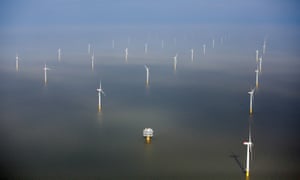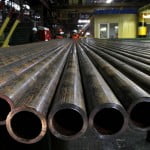
Four years ago, Danish wind turbine manufacturer Vestas was on the brink of bankruptcy. The company famous for sending in the bailiffs to evict employeesoccupying their Isle of Wight site, axed more than 3,700 jobs. Relations were in turmoil as the chair, deputy chair, chief financial officer and deputy chief executive left in quick succession. The CEO himself followed one year later as net losses escalated sevenfold to £53m.
Fast forward to 2016 and the world’s biggest turbine manufacturer is reporting historic successes, including a record €685m (£530m) net profit last year and a 22% increase on revenue to €8.4bn (£6.5bn). It also recently announced it had been awarded a contract to supply turbines for Europe’s largest ever onshore wind project in Norway.
Vestas’ head of external communications Michael Zarin puts the turnaround down to its pursuit of a strategy to drive down the cost of energy while driving up revenue from servicing turbines, rather than production and development alone. In December, the company acquired US wind provider UpWind Solutions, followed two months later by the German firm Availon. They now predict 40% growth in their services provisions.
Vestas is not the only one finding success. The global wind industry is booming. A record 62GW of wind power capacity was installed in 2015, up by a quarter on the previous year. The industry has been growing steadily year-on-year, as competition has increased and the cost of producing (pdf) turbines has dropped since its 2009 peak with materials becoming cheaper in the wake of the recession.
as Europe reached peak wind? Almost, according to David Hostert, European wind analyst at Bloomberg New Energy Finance. He predicts that annual growth in Europe will drop to 8-9GW, compared to 11GW last year and plateau in about 18 months.
“That has to do with subsidy schemes winding down, more competitive allocation mechanisms like auctions, and the availability of good sites,” he says.
As the locations attractive to wind developers fill up in densely populated European countries, offshore wind is expanding. Last year, Europe’s seas sawmore than 3,000MW of power connected to the grid – mostly in Germany – more than double the figure for 2014. Although the oceans come with higher risks and costs, they also bring the promise of higher wind speeds and fewer objections from local communities. As technology improves and costs drop, turbines are being constructed deeper and further out to sea, with construction about to begin in Scotland on the world’s largest, floating wind turbine farm.
“The [offshore] industry is probably at a tipping point … it has matured a lot in the past two to three years and we are starting to see the cost declines necessary to ensure the long-term viability of the sector … but it is still very much a European world,” says Hostert.
But onshore investors are increasingly looking outside Europe. Of the 62GW – equivalent to almost half of Europe’s total wind capacity – installed in 2015, almost 50% was in China. The US market should also be consistently reliable for the foreseeable future, safe in the knowledge that it has the backing of a five-year federal tax credit scheme, which was extended for a further five years in December.
[“Source-theguardian”]




